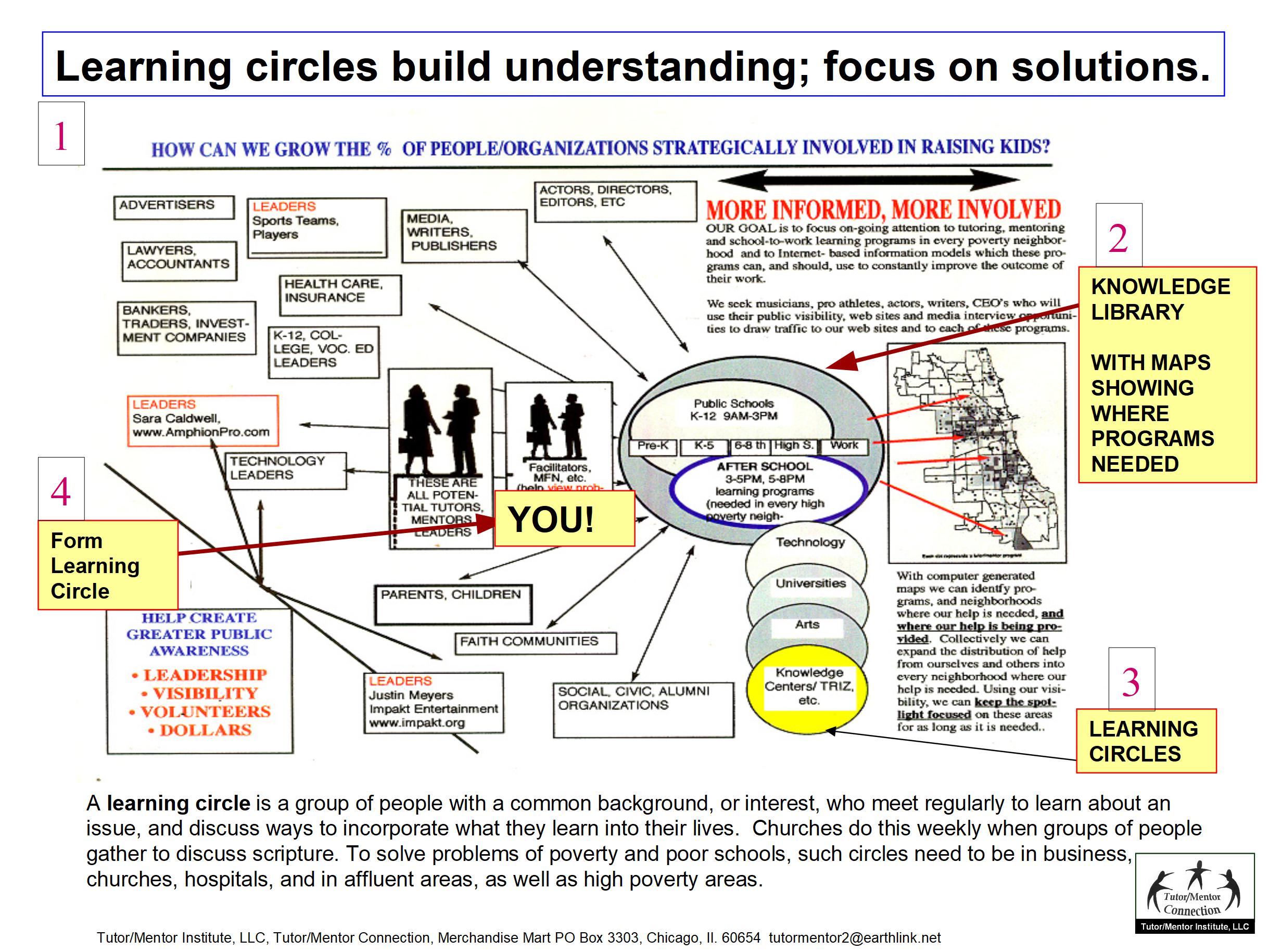 The book titled, The Starfish and the Spider, illustrates the T/MC and T/MI role as a catalyst in building a decentralized network of leaders who support volunteer-based tutor/mentor programs in Chicago and around the world.
The book titled, The Starfish and the Spider, illustrates the T/MC and T/MI role as a catalyst in building a decentralized network of leaders who support volunteer-based tutor/mentor programs in Chicago and around the world.
Role of Catalyst in Building Network. The book describes the role of a catalyst who inspires the growth of a decentralized network of people focused on a common goal. This is a role Dan Bassill, founder of the Tutor/Mentor Connection (T/MC) (1993-present) and Tutor/Mentor Institute, LLC (2011 to present) has taken since 1975. The graphic below illustrates how volunteers and leaders reaching into their own networks on a regular basis, can draw volunteers, donors, partners, etc. to information hubs like the http://www.tutormentorexchange.net web site, then on to various neighborhoods in Chicago, or any other city, where they become volunteers, donors, leaders, etc. at existing programs, or where they help form new programs to fill voids. In a single program, where each volunteer works one-on-one with a student, and all students are different, this same concept applies. The volunteer is accessing all of the resources of the program, and fellow volunteers, to find ways to help the youth take charge of his/her own future.
When you invite people you know to look at this page, or read the Tutor/Mentor blog or connect on social media, you are a catalyst, who connects people you know to information and ideas that they can use to help end poverty, improve education, and make life brighter for youth born in poverty. Read the pdfs in the Tutor/Mentor Institute Library to learn more about our network-building strategies.

As leaders in various industries, colleges and faith communities begin to encourage members of their network to become volunteers at various tutor/mentor programs, these volunteers will become new leaders who tell other people about their experiences and encourage their own involvement.
As volunteers with a common background, such as arts, technology, same university, same church, etc., begin to form circles, they share ideas with each other, and inspire greater and more creative involvement in tutor/mentor programs throughout the city. View this Total Quality Mentoring PDF to see the goal of volunteers from many sectors supporting youth and tutor/mentor programs in every high poverty area of a city like Chicago.
As we facilitate this process, we begin a form of appreciative inquiry, where groups of people ask "what works, what does not work, and, what can we as a group to make it work better, and in more places?" As this happens, these groups will become new leaders to work to draw more volunteers, dollars, technology, etc., to tutor/mentor programs throughout big cities like Chicago.
 This graphic illustrates the goal of expanding the network from a few people to thousands or millions of people. We have been using geographic maps to show where poverty is concentrated and where tutor/mentor programs are most needed. In the past decade we've also been trying to adopt Social Network Analysis tools to map growth of the network over a period of years.
This graphic illustrates the goal of expanding the network from a few people to thousands or millions of people. We have been using geographic maps to show where poverty is concentrated and where tutor/mentor programs are most needed. In the past decade we've also been trying to adopt Social Network Analysis tools to map growth of the network over a period of years.
Here are two 2012 presentations showing work of interns and the growth of membership on our Ning.com forum from 3 people in 2007 to 417 people in the middle of 2012.
* Network Analysis Project * Expanding Networks and using Analysis Tools
If you agree with this vision, we encourage you to invest in it with your time, talent and dollars. E-mail
